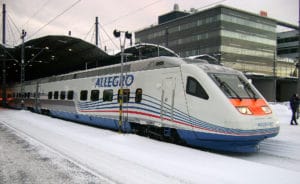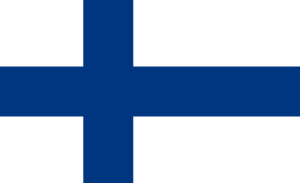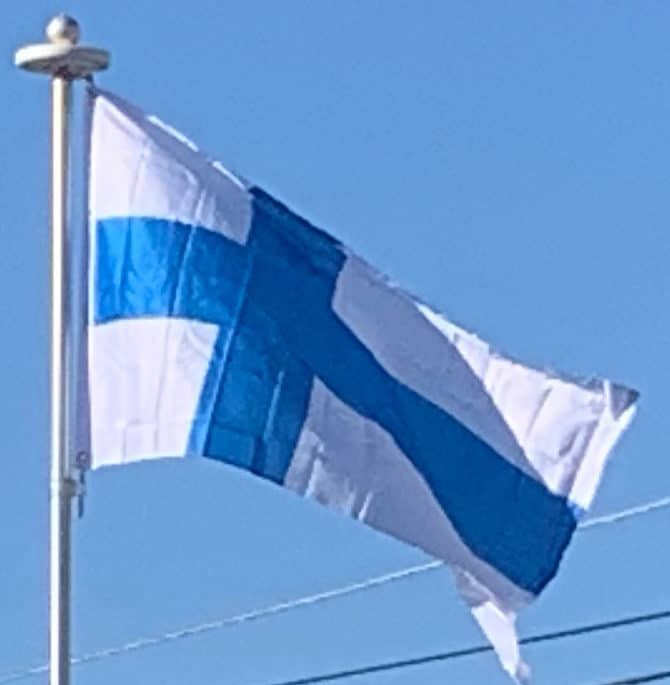The main international passenger gateway is Helsinki Airport with about 17 million passengers in 2016. Oulu Airport is the second largest, while another 25 airports have scheduled passenger services. The Helsinki Airport-based Finnair, Nordic Regional Airlines, and Norwegian Air Shuttle sell air services both domestically and internationally. Helsinki has an optimal location for great circle (i.e. the shortest and most efficient) routes between Western Europe and the Far East.

Despite low population density, the Government spends annually around 350 million euro in maintaining 5,865 kilometers (3,644 mi) of railway tracks. Rail transport is handled by state owned VR, which has 5% passenger market share (out of which 80% are urban trips in Greater Helsinki) and 25% cargo market share. Since 12 December 2010, Karelian Trains, a joint venture between Russian Railways and VR (Finnish Railways), has been running Alstom Pendolino operated high-speed services between Saint Petersburg’s Finlyandsky and Helsinki’s Central railway stations. These services are branded as “Allegro” trains. The journey from Helsinki to Saint Petersburg takes only three and a half hours. A high-speed rail line is planned between Helsinki and Turku, with a line from the capital to Tampere also proposed.

The majority of international cargo utilizes ports. Port logistics prices are low. Vuosaari Harbour in Helsinki is the largest container port after completion in 2008 and others include Kotka, Hamina, Hanko, Pori, Rauma, and Oulu. There is passenger traffic from Helsinki and Turku, which have ferry connections to Tallinn, Mariehamn, Stockholm and Travemünde. The Helsinki-Tallinn route – one of the busiest passenger sea routes in the world – has also been served by a helicopter line, and the Helsinki-Tallinn Tunnel is proposed to provide rail travel between the two cities.
Flag of Finland:
The flag of Finland, also called siniristilippu (“Blue Cross Flag”), dates from the beginning of the 20th century. On a white background, it features a blue Nordic cross, which represents Christianity.
Like Sweden’s, Finland’s national flag is based on the Scandinavian cross. It was adopted after independence from Russia, when many patriotic Finns wanted a special flag for their country, but its design dates back to the 19th century. The blue coloring is said to represent the country’s thousands of lakes and the sky, with white for the snow that covers the land in winter. This color combination has also been used over the centuries in various Finnish provincial, military, and town flags.

The first known “Flag of Finland” was presented in 1848, along with the national anthem Maamme. Its motif was the coat of arms of Finland, surrounded by laurel leaves, on a white flag.
The current blue-crossed design was first used in Finland by Nyländska Jaktklubben, a yacht club founded in Helsinki in 1861. In addition to the blue cross on the white background, the yacht club flag had the crowned arms of the province of Uusimaa within two crossed branches in the upper hoist quarter. Except for the position of the cross, the flag was similar to the flag of the St. Petersburg Yacht Club, founded the previous year. The design can be traced to the Russian Navy ensign, which has a blue cross saltire on a white background. During the Crimean War, Finnish merchant ships captured by the British-French fleet flew a flag called Flag of St. George, which was based on the Russian Customs flag. In this variant, the cross was thinner than in the modern flag, and the proportions were equal. Another blue-cross flag was made official in 1861 for private vessels.
